I’ve been writing a lot about the future of education: how we are on the cusp of transformational change, and how museums may play a vital role in the next educational era. Today Steven Lubar, director of the Haffenreffer Museum of Anthropology at Brown University, offers this spot-on summary of the forces working to unbundle higher education into its constituent pieces, and savvy suggestions for how museums can respond.
Education is imploding. It’s not just classes that are flipping. It’s the whole idea of what schools should do. Or not do: the New York Times reports that Silicon Valley billionaire dropouts think that the really good students should just drop out and become Silicon Valley billionaires.
But a moment of panic in education can be a moment of opportunity for museums.
What’s changing and how can we take advantage of it?
Teaching is changing. This is getting the most publicity. Online courses are everywhere. MOOCs – the ugly acronym for Massive Open Online Courses – are looming in the background, 100,000-student online courses that, though they have no financial model, and unknown efficacy, and limited subjects where they seem likely to succeed, have university administrators running scared. Smaller scale changes – the Khan Academy’s notion of having the students watch video lectures for homework, using the class for discussion and one-on-one work are taking off. So is the focus on measuring achievement, in a million ways. Badges for everyone, and everything.
Research is changing. While the traditional humanities are fighting a rear-guard action in defense of theory and the right of faculty to write only for other faculty, a sense of the importance public engagement and a connection to the wider world is getting stronger.
Publishing is changing. Academic journals and publishers are having a hard time. The web explodes with content, and faculty are realizing that if they want to make an impact, if they want their material read, the open web is the place for it.
Employment in higher education is changing. Just search twitter for #alt-ac.
What can museums learn from this?
For a start, there are new opportunities to work with universities. As universities open the door to new kinds of teaching and research, museums should be at the door. Museums are good at public engagement. Let’s partner with universities to share our audiences.
Museum collections, openly available online, can serve as the raw materials for the world of on-line university research and teaching. But it also works the other way. As universities try to see what makes physical spaces interesting and gives them an edge in competing with MOOCs and other virtual classes – we suggest that real artifacts are the perfect complement to real interactions between faculty and students.
And in a world where opportunities to learn are increasingly distributed, where a student might get credit for a MOOC here and a badge there, museums can play to their strengths in offering a smorgasbord of activities for a student audiences. Museums have the content and know what works for teaching: now they can get credit. The Smithsonian has started offering badges. Museums should be ready when colleges start offering course credit for badges.
But museums will have to change to take advantage of the turmoil roiling our colleagues in education.
We’ll need to be open and available. We need to let our collections be used by others for their ends. That means sharing online collections and images as open data, being open to collaborations, letting go.
It means that we need to break down the walls that separate curatorial expertise and educational expertise within the museum. Curators and curatorial knowledge will have to be open to the public. The one rule of the web is disintermediation: no more gatekeepers. Curators will need to be open directly to their audiences. Museum educators will need to know collections and content. Those jobs will merge as the museum opens up.
We need to celebrate our physical and social spaces. Museums offer the social experiences and direct connection with the real thing that universities give up as they move on line. We can play the role not just of classroom and laboratory but also student center.
Museums can come out of this stronger than they are now. With collections information and expertise online and available, and social spaces open for engagement, they offer a lot that universities need. Museums can take advantage of the confusion in the world of education to make themselves an essential element of the new world of education being shaped now – even if we don’t know yet what it will be.
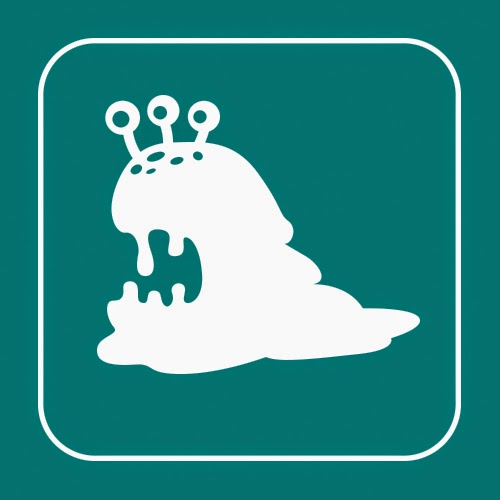
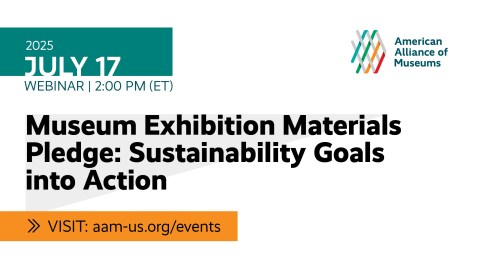



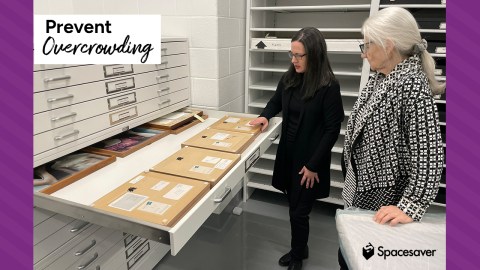
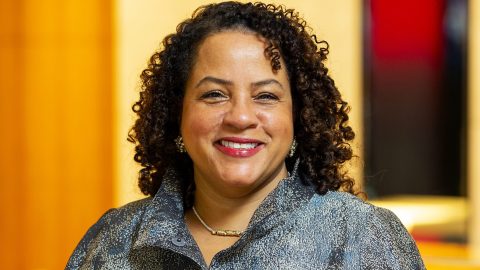
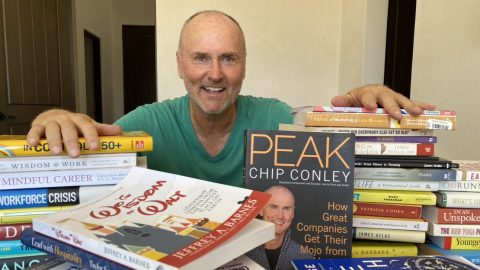

I think you're right about the jobs merging, out of economic and programming necessities.
I would like to see more museum educators have advanced degrees in content areas for the museums in which they work. One needs some advanced disciplinary work in order to know methods and be able to write, teach, and interpret the collections, and show others how to join the museum in those pursuits.
For smaller institutions, especially, these curator-educators may also need the skills to install and run a blog, or at least be able to update and manage content for different online services.
I'm not trying to say that these overworked museum professionals need more to do. But, if you have some skills + content, you can do more to help shape points of engagement with visitors.
Sheila,
Thanks for your reply. I agree that there's a need for museum educators to have content expertise. I don't necessarily agree that means an advanced degree in a content area, though; it might mean broadening the training of museum educators so that they have an understanding of the ways in which historians or other subject specialists work.
The same is true, of course, for curators. They need to know about how and why visitors learn and how to reach them.
And this is not simply for practical reasons, though that is enough of a reason. I would argue that there's also a deeper philosophical rationale for curator-educators in museums. There must be a structure to content knowledge. How it's used, who it's for, shapes that structure.
One knows different things, and puts the things one knows together differently if the perceived audience is experts – whether those experts be collectors and connoisseur or academics. Putting facts and theories together for a general audience shapes not just the style of presentation, but what you present.
And so it seems important that educators and curators not only have the technical skills to reach their diverse audience in diverse ways, to physically or virtually connect with them. Curator/educators must also know enough about their audiences to intellectually and emotionally connect with them.
That means shaping knowledge for them. Museums need to engage with audiences where the audiences are – physically, virtually, emotionally, intellectually. Curator/educators need the skills to create the stories museums tell to in a way that reaches audiences.
–Steve
I completely agree with everything that's said in this blog–the education world has already changed, and so has the way that we share information. Some folks are already doing a great job of opening up their doors to sharing data and collections, as well as to public knowledge (I think immediately of the museums/orgs. on the Flickr Commons as well as projects like the Cooper-Hewitt's alpha collections release with open collections metadata for all: http://labs.cooperhewitt.org/category/collection-data/).
As for the jobs in museums, I feel like we're already seeing things change as well. My position, for example, is a mixture of curatorial, outreach, social media, and web programming. Sometimes it's overwhelming to be stretched across so many areas, but when you have teams of people doing the same cross-departmental work, the workload becomes manageable and the work becomes more holistic and strong from team input. After all, there's much to be said for a table of people with lots of experience of what fails and what works to come up with good new ideas together.
Curators, if they're open to it, are a natural match for making interesting content not only for a formal exhibit, but also for blogs and social media outreach projects. The same can be said for educators (many of whom do have advanced degrees of some sort in history, anthro., archeo., in my experience). The tradition of these two groups not having complete respect for one another is starting to break down, at least in my world, which is wonderful to see.
Now the question, is how does one train a young museum professional who needs to have such a multi-faceted background to be able to function and compete in the museum world?
Great post – your readers may also be interested in a post Steven Zucker and I wrote, "Museums and Open Education": http://mfeldstein.com/museums-and-open-education/
Thanks for this link! I'm sorry I didn't come across this before I wrote my post – I would have linked to it.
I especially like the last bullet of your post, where you say: "Empower content experts to become content creators." As you say, that's increasingly easy to do. Some of the same tools that allow professors to reach thousands of students can be used for curators to reach thousands of interested museum and web visitors. Most of these are easy and cheap – MOOC "lectures" are often nothing more than screen captures off of powerpoint slides. Museums can easily do better!
Your point about authenticity (and the MIT website you link to, http://www.mit.edu/newsoffice/2012/mitx-edx-first-course-recap-0716.html, suggests that the authenticity the curator brings to his or her interactions with the public matters more than the fancy containers museums worry too much about.
Museums have interesting things. Museum people know interesting things. That's what the world wants now! (See Sianne Ngai's new book "Our Aesthetic Categories: Zany, Cute, Interesting" for more "interesting." http://www.thedailybeast.com/articles/2012/10/23/zany-cute-interesting-what-the-words-we-use-say-about-us.html
–Steve
This is an excellent article. However, I'm not sure that a paradigm shift is in the works. It is extremely difficult to change entrenched ideas, customs, and habits. The people who are attached to these antiquated notions have little incentive to change…
Yes, yes, yes!
I think a sea change is underway, although it might be a bit slower than we museum folk like.
I agree that museum educators should have advanced degrees in the field. I personally think that MAs in education are far less useful than an MA in public history or museum studies. HOWEVER, museums that cannot afford to pay adequately for skilled educators with advanced degrees should instead focus on folks with natural educator skills.
I personally run our social media and website, am working on a digitization program, and coordinate all our volunteers in addition to developing and leading educational programs and scheduling field trips.
I am most excited about the potential of the Common Core Standards to open more doors for museums, especially with primary sources, document analysis, and research.
I don't think it will happen overnight, but with the advent of the internet as the font of all knowledge, teachers and educators are no longer the sole gatekeepers of knowledge and knowledge-based education may soon be a thing of the past as the focus shifts to teaching students the skills to evaluate and think critically about the information that is out there, instead of just acquiring knowledge.
Fourteen years ago, I merged our small museum's part-time educator and part-time collections care coordinator in to a single full-time curator position and filled it with a Museum Studies degree-holder. I thought I was returning to the old days when small museums only had curators – not even a director. One person who knew the collection and it's significance, interpreted it and cared for it. (well, more or less) Little did I think that I was ahead of the curve!
My main concern about all this sharing via media, is how do we replace the lost admissions income to support these highly-qualified individuals and "interesting" collections? The public perception is that it should all be free, as in a public library. Public schools certainly don't have the budget resources to pay more than a token amount, if anything, for the resources we can provide. TV programs such as the History Detectives reinforce this perception when their so-called experts waltz into the local museum or archive and access their expertise for apparently nothing more than a shot of the institution's front door and a credit line at the end of the show.
Somehow we must always strive to convert "interesting" into "imperative" in the public mind, and remind those receiving our content that it does not come cheaply.
Hi, Steve, I enjoyed your post and also the comments. I agree with you and the responders about the need for a closer allignment of interests and general knowledge between curators and educators – each knowing more about the fields of the other and understanding their perspectives. Lots of this happens on exhibition teams, though I would say from my experience that educators often do a better job of of studying and grasping the content of an exhibition than do curators the visitor-centered perspectives and activities that educators try to propose for exhibitions. So I think more mutual sharing of expertise and content is definitely in order. But I hope the positions don't merge entirely because I think there is an important role for each, and except in the case of the smallest museums, more than enough of each role to occupy a person full time.
Curators need to continue to be experts in their field and in the collations they care for, and of course now need to expand that expertise into both learning from and communicating through social media. As for educators, I do think their roles need to become more exhibit-oriented, not replacing the curator regarding content generation, but using their expertise in learning theory, how people learn in general, how people learn in museums, the necessity for understanding developmental differences in learning, etc. This kind of knowledge is important for creating exhibitions that are accessible to the multigenerational groups that are the core of museum visitation. Educators also need to become experts in interpretive planning for exhibits, a process that is used in many museums in Canada and the UK, but not so much in the US. And of course educators must be proficient users of social media for its educational potential. In my blog Museum Commons, http://museumcommons.blogspot.com/ I've been writing about skills museum educators need to develop in a series of posts during the fall and winter, and hope to continue in 2013.
Thanks for raising these important questions and especially for the ways in which you utilize Twitter and blogging in your role both as a historian and as an educator of museum professionals. It's something lots of museum studies programs could emulate.